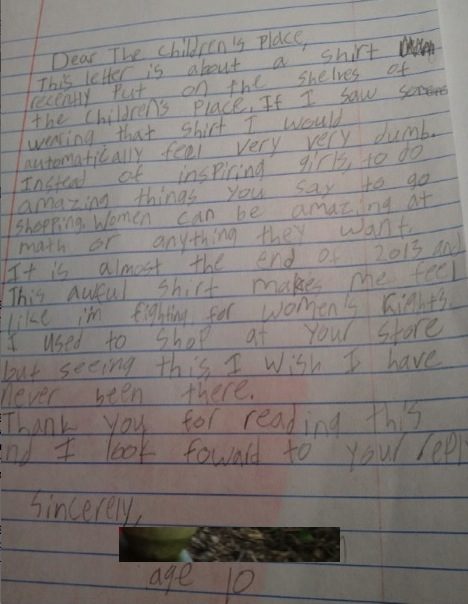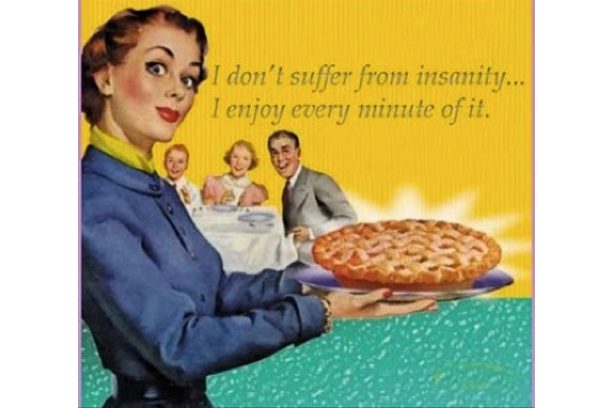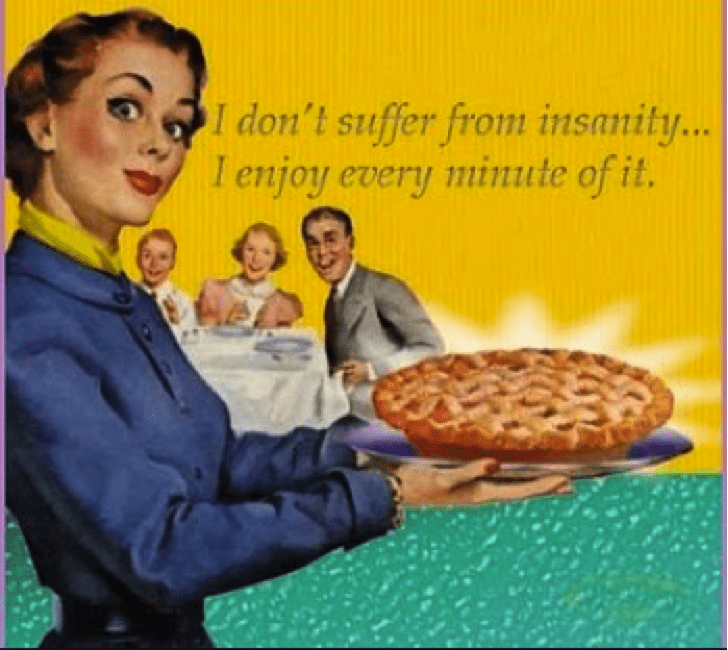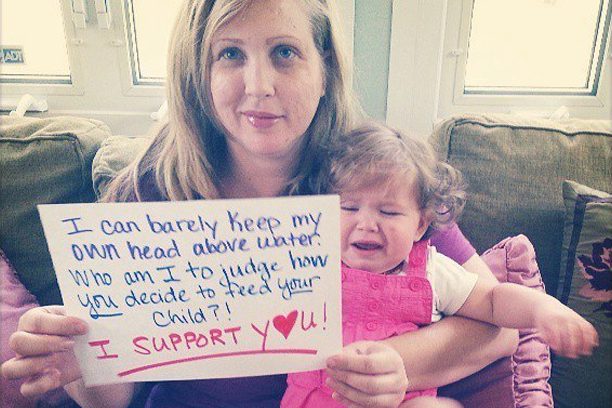
by admin | Dec 3, 2014 | Blog

Recently, after my son lost a race, a friend said to him, “You were beat by a girl.” I was stopped dead in my tracks. The man who said this is probably the least likely person to perpetuate outdated gender roles. He is a stay-at-home dad who does laundry and dishes and is a class parent. And yet, he still said it.
My shock at his words spewed out automatically. I looked at him and asked, “Did you just say he was beat by a girl?” Immediately my friend recanted. He himself didn’t know where that comment came from. It was probably a remnant from a childhood schoolyard. He felt badly and that was that.
But days and weeks later, I couldn’t forget it. Something truly bothered me.
My husband and I try to teach our kids to accept all kinds of people. We talk about discrimination and bias. We surround ourselves with people of color, different religions, successful women and men working outside the box. We show them that mommy can be a doctor (PhD) and dad can paint his toenails. However, it hit me that my kids are still getting discriminatory and gender stereotyped messages all the time. No matter how hard I try to open up their world of possibilities, someone is trying to close it.
This should not be a shock to me. I know there is plenty of gender bias and discrimination out there. I know that women are still paid less than men. I know that women are underrepresented in congress and at the top of most corporate jobs. I myself have had my share of discrimination at work.
When I was growing up, my sister and I listened to Marlo Thomas’ Free to Be You and Me until the record wore out. The lessons were profound: women could do anything. They could become doctors or engineers, and didn’t have to do housework. I was raised by a working mother who showed me I had no boundaries or glass ceilings. Free to Be You and Me also taught me that “real men” could cry, they could like dolls, and want to take care of children. Marlo Thomas, along with her friends, changed my life.
When my daughter was born I immediately bought her the video of Free to Be You and Me. We watched it for years. I still loved it but now it felt outdated. Did my daughter really need these lessons like I did?
Sadly, four decades later, maybe not as much as I had hoped has changed. Maybe all the same gender stereotypes are there, but they’re more insidious. You have to look harder, making them all the more challenging to attack.
This incident has made me realize that I have to be more explicit in my direction of my kids. It isn’t enough to be a good role model. It isn’t enough to have my daughter see successful women or enough for me to buy my son a kitchen to play with.
The conversation needs to happen and it needs to happen often. If I want to counteract all of the messages that my kids see every day, then I need regularly to talk about what gender roles are, why they are hurtful and empower my kids to shun them.
 Last year The Children’s Place produced a girls’ T-shirt that had a checklist. It read, “My best subjects are: shopping, music, dancing and math.” But only the first three subjects were checked. Math remained unchecked with the parenthetical saying “Well, nobody’s perfect.” It was horrifying. I took the opportunity to discuss it with my daughter and she got it. She was inspired to write a letter to The Children’s Place and she decided to no longer shop there. I was so proud. Eventually, as a result of the backlash, the store removed the shirt from the shelves. I thought, great, mission accomplished.
Last year The Children’s Place produced a girls’ T-shirt that had a checklist. It read, “My best subjects are: shopping, music, dancing and math.” But only the first three subjects were checked. Math remained unchecked with the parenthetical saying “Well, nobody’s perfect.” It was horrifying. I took the opportunity to discuss it with my daughter and she got it. She was inspired to write a letter to The Children’s Place and she decided to no longer shop there. I was so proud. Eventually, as a result of the backlash, the store removed the shirt from the shelves. I thought, great, mission accomplished.
However, clearly we as a society cannot sit back and try to sporadically fight to change gender bias. Our work isn’t done yet. It won’t be done until no one even thinks girls can’t do math or that it is shameful for a boy to be beaten by a girl.
I do believe that we can accomplish this. I am hopeful because if I weren’t I would sink into despair. I will take this reminder to redouble my efforts. I hope you will, too.


by admin | Nov 19, 2014 | Blog, Catherine's Picks

A few days ago Forbes.com ran an article with the eye-catching headline, “The Morning Routines of 12 Women Leaders.” The point of the piece was to show the not-so-famous women of America how the more-famous women of America kick off their days with routine as a way to reduce stress. As I began to read, I thought, “Great! I could definitely learn something to improve my morning routine.”
Eh, it didn’t quite work out.
As I read about the various CEOs and TV personalities, I found myself feeling … worse. As in–more stressed out. The accounts of their mornings didn’t feel real, and they didn’t read like any women I know who have busy careers. Well, except for two or three (In full disclosure, Sharon Epperson is a good friend, and her morning sounded just right).
The more I read, the more it dawned on me that this article exemplified the exact reason so many women hate so many other women. Stay-at-home moms judge working moms (and visa versa). Women working the grind judge highly successful CEO women.
Many of the successful women profiled in the article seem to take a certain sadistic pleasure in displaying how absolutely amazing they are. I mean, they’re able to juggle all elements of their busy careers while still making time for highly specialized yoga, green smoothies, and working out seven days a week.
At 4:45 am, one woman says she does, “an hour or so of third or fourth series ashtanga yoga.” By 6 she’s prepared her kids their breakfast of green milk–made from almond milk with coconut water, banana and steamed baby spinach. Another healthy leader makes her fair trade coffee and has a vegan Zen Bakery muffin. Bravo!
Two other women start the morning with prayer and intentions for their day. Among the many who have time to work out seven days a week, one heads down to the home gym for an exercise session while watching Squawk Box (I didn’t know what this was. So I looked it up. As stated on the Squawk Box webpage “Squawk Box is the ultimate ‘pre-market’ morning news and talk program, where the biggest names in business and politics tell their most important stories.” Now you know.)
Another leader wakes at 6:43, doesn’t snooze but has time to “pull on John Eshaya sweatpants and clogs.” Those sweats cost $110. Glad she got the plug in.
You know what I was hoping for? Truly hoping for? Humanity and humility. I get that the article was prepped to show how their morning routines reduce stress and set them on the course to be successful. But real-life demands–such as tired and overworked parents, a toddler temper tantrum, a sick dog, a misplaced permission slip, or a late babysitter–usually set the stage for a much different routine.
So in response to this piece, I would like to start a new trend. Every woman (leader or otherwise) should write their real morning routine, warts and all.
Here is my morning routine …
“¢ 6:40–Alarm goes off. Snooze
“¢ 6:48–Alarm goes and I begrudgingly get up. I am not a morning person (although I would like to be)
“¢ 7:00–I head downstairs in my husband’s free running shirt from a long-ago race and the free sweatpants my mom got five years ago on Virgin airlines.
“¢ 7:03–Make the first of many cups of tea for the morning while also checking my email and Facebook.
“¢ 7:05–I yell up to remind the kids they are late (This happens almost every morning).
“¢ 7:08–I put a bowl and spoon in my daughter’s spot for her several bowls of Honey Nut Cheerios. I make a plate of whole-wheat waffles, berries, and juice for my son.
“¢ 7:10–I make a predictable lunch of cheese, bread, granola bar, and dried apples for my daughter and a healthy lunch and snack for my son. Inevitable complaints ensue.
“¢ 7:15–I ask the husband if he can take the dog out because I’m lazy and it is a little chilly in the morning. He complains, but ultimately does so.
“¢ 7:25–I rush my son to finish his breakfast so he can use the bathroom before we leave the house.
“¢ 7:28–I run around the house barking questions and orders. “Did you refill your water bottle?” “Pick up your dirty socks and put them in the laundry!” “Do you have your gym shorts?” “Get your shoes on!”
“¢ 7:33–My husband takes my son to school. As they leave we realize they are running late again and we will probably get that call from the principal telling us our son was not in line on time.
“¢ 7:45–I put on my very worn clogs and drive my daughter to the school bus in my pajamas that almost look like regular clothes but, well, aren’t.
“¢ 7:55–I sit down with what is probably my fourth cup of tea, eat a roll from Costco with my favorite almond butter with maple and begin my workday.
It’s weird how Forbes didn’t give me a call.
What is your morning like? Share your morning on Facebook, Twitter, your blog or tell a friend.

by admin | Mar 31, 2014 | Blog

- Picture by Valocity Studios
A video popped up in my news feed on Facebook today that hit me hard. I hesitate to write this post as I know it will point out this video to even more folks. But I think it is important to raise the issue and it really cannot fully be understood without seeing the video.
I can see the thought that went into the moment on the video. A mother is pregnant. She bakes a blue or pink cake to tell the kids whether they will have a baby brother or sister. A boy and his two little sisters come to the table where a white frosted cake is presented. Video and camera in hand as both mom and dad watch their son cut into the cake to discover mom is having another girl.
Here is where this video goes wrong for me. The little boy is distraught about having a third sister. He was hopeful and excited of the possibility of having a brother. He breaks into hysterics and dad tries to console him by saying “I wanted a boy too. It’s ok. You will love your sister…” This continues on for three minutes. Boy expresses sadness and dad continues to film. Dad just keeps trying to get the little guy to admit he will love his little sister.
It is so painful to watch because this boy is in real pain. As anyone who has tried to have another baby hoping for a specific gender but not getting it can attest, it is disappointing and can be painful. Doesn’t mean he won’t love his sister. But he is allowed to be sad and upset.
What I wanted so badly in this video but didn’t get was to see mom or dad put the camera down and go hug him. Tell him they are sorry he is disappointed. Empathize with how much they know it would have meant to him to have a brother. They shouldn’t push to convince him he will love this child. That is beside the point.
Further upsetting me is the fact that even after the filming of this precious moment was over, the parents decide to post it on YouTube publicly. Ok so you didn’t have your best parenting moment and your son was really upset. No one is a perfect parent. But why not just keep that to yourself. Laugh about it later.
I am sure they will love the little baby just the same. But it seems like a little discretion and empathy would have better fit the bill.

by admin | Feb 6, 2014 | Blog, Catherine's Picks

Lately I have been obsessed with young adult literature. Wonder, The Book Thief and The Fault in our Stars are some of my favorites. I enjoyed them as much (or more than) any ‘grown-up” books. Somehow, when they’re done well, teen-themed books seem to get to the heart of life’s struggles.
I recently read an advanced copy of Game World by C.J. Farley. Game World, released this week, is a story about an unpopular boy who is really good at video games. It turns out that he has an opportunity to not only play the game, but live the game in reality when the game world becomes the real world through a portal.
I am not much of a video game person and, quite frankly, I try to limit my kids’ use of screens. So I didn’t think a book about video games would be for me or my kids. But this book is special.
Farley sought to write a book that showed characters not readily visible in other books for young adults. Typically there aren’t people of color or those with disabilities offers as main characters. But Game World highlights both. And stereotypes are turned on their heads. Instead of the kid in a wheelchair being timid and afraid of life, he is so strong that he boosts up the courage of his able-bodied friend.
Another area of C.J. Farley’s brilliance is that he found a way to get kids who are interested in video games to read. Game World is an adventure set in a video game. What a smart bridge for kids resistant to reading!
I highly recommend Game World for kids in 4th – 12th grade. Parents can read it too and love the characters and story just as much as the kids.
by admin | Oct 22, 2013 | Blog, Uncategorized

As I entered the kitchen this morning to make my much-needed hot tea, I saw the remnants of my son’s football-themed seventh birthday party. Presents and cards from friends piled up. Green-and-white streamers, paper footballs, a homemade team T-shirt left behind.
My husband and I have always tried to make birthdays special for our kids by hosting the parties at home. Our kids truly look forward to the moment when they see the decorations, the themed-cake (which takes me about seven hours to create), the games and crafts. They love it all. Even as my daughter approaches the teen years, she still cherishes the homemade party.
And yet, the party doesn’t make itself. It takes weeks of organization, shopping, ordering, and prepping. It is a task I love and fear all at once. How will I get it all done? If I spend all this time getting ready for the party, then I am not doing something at work. Or worse, I have to find a way to pact it all in.
I’m not great at finding balance. I came to this conclusion this morning when I work up exhausted. Headachy. Beaten down. I didn’t sleep well. I was too stressed about all I need to get done in the next few weeks. I have three conference presentations to write and present. I have two Halloween parties to organize and run. I have family dinners, school projects, and doctors’ appointments. I teach four weekly classes, I need to update my lesson plans. It all just feels like too much.
I often talk with other working moms about how they balance career and family life. What I have come to realize is that you cannot have it all. You can’t have a high profile career and make homemade goodies for every school-sponsored bake sale. You can’t travel for work and make sure that your kids have a healthy snack for lunch every day. You can’t make it to every class trip or art show or play and still meet all of your obligations at the office. You have to make choices and sacrifices.
I don’t care how many high-profile women (a la Sheryl Sandberg) pen best-selling books saying they have cracked the code. You can’t have a dream career, be successful at it and be able to be a full-time supermom. Somewhere, something has to give.
In my case –to be 100-percent honest–I haven’t cracked the code. I haven’t found a way to do it all. What inevitably happens is that I either try to do it all and find that I can’t (stress winds up trumping enjoyment). Or I give up doing something that I thought was important to me, like being a class parent, picking up from school, or making homemade _____ (fill in the blank).
Some working women are very driven by their work identity and are comfortable surrendering some of the day-to-day parenting tasks. Other women give up work altogether and devote themselves fulltime to parenting. These stay-at-home moms give up the idea of working outside of the home quite comfortably. Lastly, there are the moms (like me) who aren’t in either of those positions. I am not able to hand over a piece of work or a piece of parenting. This leaves me feeling perpetually behind the 8-ball–stressed, and feeling like I am not doing enough anywhere.
While I acknowledge my problems intellectually, I can’t find a way to change. I don’t know how to prioritize. It all seems important. I want to get tenure at work, which means doing more than just my job. But I also want my kids to feel like I was there for them in their childhood. I want them to remember the special touches–their birthday cakes, the handmade Halloween costumes, the Sunday dinners with family. I want them to know that, while I choose to work, I love them more than my job. I want them to know happiness in childhood so they can find it in adulthood.
I don’t know if I will accomplish my tenure or if I will give my kids the childhood I wanted them to have. For today, I will continue to walk the highwire trying to balance it all.
And I’ll try not to fall off.

by admin | Aug 2, 2013 | Blog

Originally posted on The Huffington Post Parents Blog
I just saw this post about women supporting women no matter how they choose to feed their babies. I love the message and thought it the right time to share my experience.
Recently watching my daughter sleep I couldn’t help think of how as a parent we naturally want the best for our children and involuntarily care for them to the best of our ability. We worry, sometimes for no reason, about everything. Are we good parents? Are we doing enough to help our kids grow into healthy adults? Are they getting enough to eat? Do they have enough mental stimulation? Having had a recent scare with my daughter’s health, I sit here watching to see that she breathes, the most basic function and wonder how important all the little stuff really is.
My daughter, Casey, is 10-years old and generally a happy, healthy, and well-adjusted child. She has met most of her milestones on time and some with great passion. She enjoys music and theater and reads anything she can get her hands on.
Yet, while I think my husband and I have done right by Casey in most areas, there is still one area that continues to plague my mind. The guilt and concern pop up in the oddest times, even with strangers. I know I cannot be the only mother feeling this confusion and pain, but it seem that no one really feels good openly expressing their opinion when I mirrors mine. Mothers all over feel concern about whether or not they were able to give their child the best start. However, it all comes down to this: if you don’t breastfeed are you less of a parent, are you selfish for not sacrificing more for the benefit of your child, and will your child always be behind and less healthy for not having been breastfed?
I admit that I had concerns about breastfeeding long before it was relevant. I’m extremely modest about my body. Seeing others’ naked breast in public has caused me embarrassment at times. I was not breastfed, nor was my sister or cousins. I have always hated milk and will not touch it under any circumstances. Frankly, the thought of milk coming out of my breast was a bit disconcerting and gross.
Depending on where you live, how old you are, and what race and socioeconomic group to which you belong, you are more or less pressured to breastfeed. The Center for Disease Control reports that the older you are, the more educated, and ironically, the higher your income, the higher the likelihood that you will breastfeed. In the United States, Caucasians breastfeed he most while African Americans are in the lowest percentile group. Furthermore, depending on your geographical location, you could have an even higher incidence. For example 71% of babies in New York City are breastfed while cities like Detroit and Baltimore have rates hovering in the 40% range.
All of these statistics mean that I am surrounded by people who breastfeed. This compounded my guilt and shame over not wanting to breastfeed. To be honest, I did have some impediments from the start. As stated, I wasn’t looking forward to breastfeeding. I didn’t feel it was right for me.
Even though I had no desire, the literature all suggested innumerable benefits to baby and mother. Breastfed babies have been shown to have better immune systems, less allergies and asthma, and higher intelligence. Babies are forced to suck harder to receive milk which strengthens their jaw and helps teeth grow better. Breastfeeding enthusiasts point out that the mother will have no bottles to sterilize and no formula to buy (a huge expense, actually). Lactation stimulates the uterus to contract back to its original size faster and to prey on every mother’s weakness, they say mothers who breastfeed lose their pregnancy weight faster since breastfeeding even burns calories. With such clear evidence and probably with some peer pressure, I decided tat I would feed my baby in the healthiest way possible.
When I went to the hospital to deliver Casey, I had a unblemished picture in my head of how it all would proceed. Following some pain and hours of anxious waiting, I would push Casey out. Then the nurse would confirm she was a girl as we had been told, and she would place her on my chest to view and cuddle. After a quick cleanup, she would be returned to my loving arms, and I would be instructed by the nurse on how to breastfeed her. All of my fear and trepidation would be tossed aside as little Casey would attach–starting a beautiful bonding between a mother and a daughter that would begin a long, wonderful friendship. I thought, in my dream world, it would go smoothly. I was wrong.
Casey was born with the cord tightly wrapped around her neck. She was limp and lifeless when she came out and was immediately taken, with barely a glance from me, to the Neonatal Intensive Care Unit (NICU). Due to some minor complications I wasn’t able to see Casey again for 10 hours. I repeatedly asked for a breast pump, but due to overcrowding in the maternity ward, I didn’t get any response. By the time I finally got to see my baby again, she had already been fed formula out of a bottle and I hadn’t tried breastfeeding for almost half a day. No one talked to me about when I should try to feed her or how to do it. When my roommate’s baby was wheeled in crying to be fed in the middle of the night, I decided to go up to feed Casey. The staff there helped me safely get Casey onto my lap but didn’t offer very much in the way of advice or instruction on how to nurse.
Casey was discharged on time and as I took her home I still clung to the hope that I would breastfeed. Even though I felt incredibly uncomfortable I continued to try. While I made more than an ample amount of milk, Casey had already become accustomed to getting milk from the bottle. So I did the next best thing and I pumped. Every three hours after feeding Casey, I attached a mechanical device to suck the milk out of my breast. Seeing 8 to 10 streams of milk ooze into the bottle to produce six ounces of milk gave me pride and nausea at the same time. I saved my milk in the freezer in marked bags to be defrosted as needed. My breasts were stretched beyond their capacity and the pain caused by engorgement and irritation due to pumping was unbearable. When a massive blackout hit the Northeast, I was obsessed with keeping my milk supply on ice. The harder it was for me to continue breastfeeding, the more attached I had become to that milk.
Meanwhile, my husband was able to feed Casey whenever he wanted, and especially during the night. I realized that formula seemed a lot easier and less painful than pumping, but does a good mom ignore her own milk for a costly, powdery substitute? As time went on my enthusiasm for doing the right thing waned and my disgust with breastfeeding grew. Strangers and friends alike all felt the need to ask if I was breastfeeding, as if that had become an acceptable line of questioning of a new mother. I said that I was, but it came with mixed emotions. Indeed, I felt pride for feeding Casey the best stuff on earth, but humiliation at not really breastfeeding. I felt as if I was a failure already for only pumping. If I were a real woman and mother I would have had no problems doing it the “right” way.
As my desire to stop lactating grew, my guilt and shame grew with it. How would I face the breastfeeding community, which was essentially everyone I knew, and say that I just didn’t want to do it anymore? The pain was too intense, and I could not longer see the benefits. The less frequently discussed side of breastfeeding is the difficulty. Aside from the pain, your body is thrust head on into the role of parenting without time to recover from the pregnancy and birth. It can be very isolating if you try to be discreet. You never know how much the baby has eaten and if it’s been enough. It is draining to be on call to feed your baby alone every two to four hours, and it is not very compatible with the working mother.
After calling the doctor for the third time to discuss the pain, she finally said the words I was longing to hear: “Maybe it would be better for you to stop breastfeeding.” My doctor was incredibly sensitive to the pain and confliction I was feeling with trying to do the best for the baby while trying to manage my own discomfort. She said that if I couldn’t even hold Casey comfortably due to the pain, it wasn’t worth it. Casey would receive more love and bond faster if I didn’t breastfeed. This was an opinion I never knew existed. I was grateful for the permission to stop the agony and go on learning how to be a mother.
I immediately stopped nursing. Within two weeks I felt like a new person. A depression had been lifted as well. My embarrassment, loneliness, frustration, feelings of inadequacy and my concern about my abilities to be a good mother vanished. Suddenly, I was capable of being there for my child without the constant pressure of whether I was being good enough. I realized I wasn’t less concerned about my child’s welfare than mothers who continue to breastfeed. I just made a different choice. I may wonder if Casey could have been healthier or smarter if I continued to breastfeed. However, I have come to peace with my decision. I know that I did the right thing for us, and that is all I can try to do.
A few years later we were blessed with another child. Again I felt pressured to do what was “best” and I breastfed. This time it went swimmingly. But after four months I quit due to a persistent infection that required me to pump and dump for at least two weeks. Again I felt ashamed and heard loads of opinions about what I should have done. I can’t say for sure what the “best” decision for feeding is. But I believe strongly that women should respect that there are all kinds of ways to love and nourish a baby.
I wish for my children all the love, happiness and health in the world. I believe I can give them that no matter how they were fed at birth.


 Last year The Children’s Place produced a girls’ T-shirt that had a checklist. It read, “My best subjects are: shopping, music, dancing and math.” But only the first three subjects were checked. Math remained unchecked with the parenthetical saying “Well, nobody’s perfect.” It was horrifying. I took the opportunity to discuss it with my daughter and she got it. She was inspired to write a letter to The Children’s Place and she decided to no longer shop there. I was so proud. Eventually, as a result of the backlash, the store removed the shirt from the shelves. I thought, great, mission accomplished.
Last year The Children’s Place produced a girls’ T-shirt that had a checklist. It read, “My best subjects are: shopping, music, dancing and math.” But only the first three subjects were checked. Math remained unchecked with the parenthetical saying “Well, nobody’s perfect.” It was horrifying. I took the opportunity to discuss it with my daughter and she got it. She was inspired to write a letter to The Children’s Place and she decided to no longer shop there. I was so proud. Eventually, as a result of the backlash, the store removed the shirt from the shelves. I thought, great, mission accomplished.







